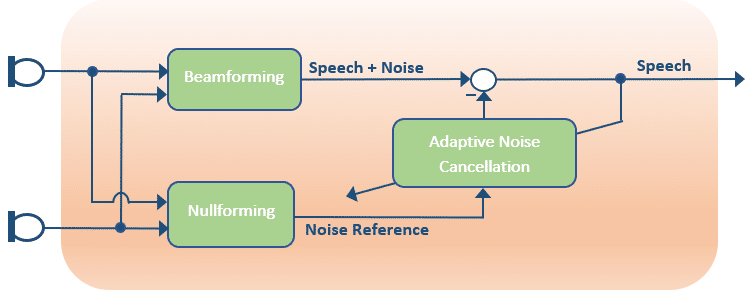A noise cancellation algorithm requires a noise reference signal and a noisy speech signal. In order for noise cancellation to be effective, the noise reference signal needs to be highly correlated with the noise present in the noisy speech signal, while containing little of the desired speech. This can be summarized by the following two equations, where X1 is the noisy speech signal, X2 is the noise reference signal, S1 is the desired speech and N1 is the noise source signal:
An effective X2 is where &&
. It is important for
to prevent self-cancellation of the desired speech, and divergence of adaptive filter.
This can be achieved by utilizing the directional properties of human speech and proper placement of the microphones. However, some dual mic product designs have limited flexibility on the microphone placement, and each microphone captures a nearly identical copy of the desired speech, . Again, utilizing the direction properties of human speech, one can implement beamforming and nullforming to generate a noise reference signal. Two sets of spatial filters can be generated for the microphone array. One that forms a beam in the desired direction and another that forms a null in the desired direction. This is illustrated in the diagram below.
This is analogous to the Generalized Sidelobe Canceller, which is an extension of this dual microphone noise cancellation solution. The fixed beamformer still serves as the noisy speech signal, and the output of the blocking matrix creates as a multi-channel noise (interference) references.
VOCAL Technologies offers custom designed multi-mic signal processing solutions to provide superior voice quality. Our custom implementations of such systems are meant to deliver optimum performance for your specific signal processing task.
